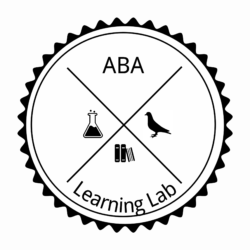By James Macon, M.Ed., BCBA
Behavior Analysts are often assumed to be experts in reducing problem behavior. While it’s true that as behavioral engineers, our field and practitioners are wells equipped and resourced to handle problem behavior, the truth is not every BCBA or Behavior Analyst is familiar with reducing serious problem behavior. Sure, they may have read about functional behavior assessments (FBA) and differential reinforcement, but designing a well crafted Behavior Intervention Plan based on an FBA is entirely different thing.
Part of this is due to a naturally existing dichotomy that exists working with clients with special needs. A student of behavior analysis most likely will complete their practicum experience as a behavioral technician, working in an early intensive behavioral intervention program (EIBI) with young children diagnosed with autism. While some of those kids may have problem behavior, it’s often easily redirected or ignored. After some period of time, that student will graduate, from University, and will become (hopefully) an excellent practitioner working in a similar EIBI setting. Problem behavior that they will encounter will look similar to other forms of other problem behavior that they have encountered in the past… that is, easily redirected or ignored.
Eventually, some of those Behavior Analysts will get some clients who have uniquely challenging behavior. The novelty of a challenging case that requires intensive research and different forms of intervention can be a powerfully rewarding experience for a Behavior Analyst, and often results in a gradual career shift that instead focuses on reducing severe problem behavior. While a curriculum based assessment, such as the Assessment for Functional Living Skills (AFLS), is often used, much more time is spent identifying the functions of problem behavior, and developing antecedent and consequence strategies to treat the behavior.
Working with either population looks very different than the other. But gaining work experience and professional training in both makes for a significantly more competent Behavior Analyst. While you may never decide to work in a specialty hospital or residential facility treating serious maladaptive behavior, here are some basics to consider if you find yourself needing an FBA.
Step 1: Don’t rely on indirect assessments.
The Functional Assessment Interview (FAI), by Robert O’Neill, is a structured interview designed to be administered with parents or caregivers. The assessment has 11 sections that describe, among other things, antecedents, behaviors, consequences, medical conditions, and hypothesis. While the assessment is a good tool for collecting background historical information, medical history, and information for developing operational definitions, it would seldom provide enough valid information to accurately identify the function of problem behavior. This is not the assessments fault, but rather a limitation of indirect assessments in general. That is, subjective, indirect information based on interviews simply isn’t accurate at times.
Step 2: Your Direct Assessments
We all learn the functions of behavior in school; attention, escape, tangibles, and automatic. In a dynamic environment, it can be difficult to pinpoint the exact function though. When ‘Little Johnny’ screams and ends up being a fed a cookie to “help him relax,” is it strictly characterized by the “tangible” function? Or does the “attention” component play a role?
Ennio Cipani and Keven Schock attempted to answer this question with their book “Functional Behavioral Assessment, Diagnosis, and Treatment: A Complete System for Education and Mental Health “(2010). They re-conceptualize the classic 4 functions in terms of a diagnostic system, where behavior can be maintained by direct access, socially mediated access, direct escape, or socially mediated escape (which are all further broken down into subsets related to attention, tangibles, or sensory stimuli). This of course answers our question, what function maintains ‘Littlie Johnny’s’ screaming. If you answered socially mediated access (to tangible reinforcers), you would be correct, and you would earn a cookie. They go own to prescribe function based treatments specific to the diagnostic code identified in your assessment. The book is an excellent read, and I would highly recommend checking it out if you find yourself completing FBA for serious problem behavior.
Step 3: Tying it all together.
You’ve operationalized the problem behavior, and your indirect assessment is indicating an “attention” function. Your job will be to corroborate that hypothesis with a direct assessment. If the indirect and direct assessments don’t match up, you may need to further analyze through the use of a functional analysis. In your written FBA, ensure that you mention the hypothesized maintaining function for each assessment type. If they contradict, mention that. If they are consistent, mention it. This serves to strengthen or weaken your hypothesis, which is crucial for treatment planning.
A thorough FBA will also identify the antecedents and ‘triggers.’ Assuming you will be creating a Behavior Intervention Plan after the FBA, it will be important to include both antecedent and consequence components to the treatment. Another often overlooked feature of the FBA, is make sure it’s readable. Often times, we end up condensing our FBA and Behavior Plans into 1 long, convoluted document. If you are the staff working with that client, you will more than likely need to review the Behavior Plan and if its tied to a long document, it may become too effortful to reference. And if the Behavior Plan isn’t referenced, the FBA itself becomes irrelevant.

